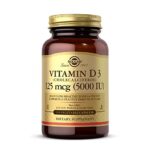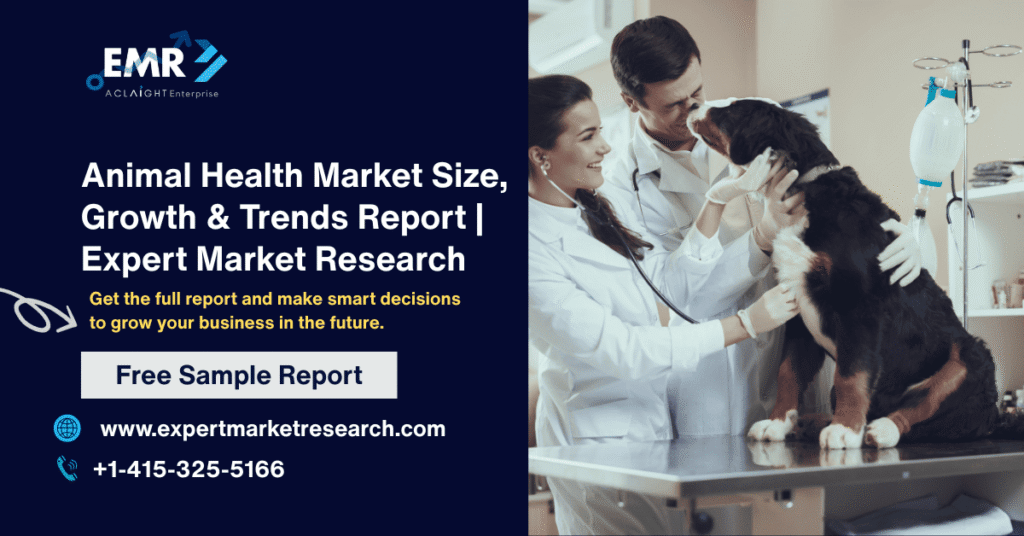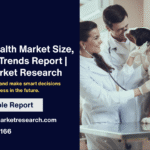The global animal health market was valued at USD 59.24 billion in 2025 and is expected to grow at a compound annual growth rate (CAGR) of 6.40% during the forecast period 2025–2034, reaching approximately USD 110.16 billion by 2034, according to Expert Market Research (EMR). The market is expanding steadily as rising demand for animal protein, zoonotic disease prevention, and growing pet ownership fuel innovation and investment in animal healthcare solutions worldwide.
Market Overview
Animal health refers to the well-being of both livestock and companion animals and involves services and products including pharmaceuticals, vaccines, diagnostics, feed additives, and veterinary care. As the role of animals in food supply chains and companionship grows, so does the need for regular health maintenance, disease prevention, and effective veterinary services.
The increasing awareness around animal welfare, food safety, and zoonoses (animal-to-human diseases) has placed greater emphasis on animal health management, encouraging governments and private stakeholders to invest in advanced treatments, prevention protocols, and infrastructure.
Key Market Drivers
1. Growing Demand for Animal Protein
The global consumption of animal protein—particularly meat, milk, and eggs—is rising steadily with population growth, urbanisation, and shifting dietary preferences. To sustain this demand, the livestock industry is focusing on improving productivity and animal health through better disease management, vaccination, and nutrition programs. This is directly boosting the demand for veterinary pharmaceuticals, biologics, and diagnostic services.
2. Rising Pet Ownership and Humanisation of Pets
In developed and emerging markets alike, the number of pets is increasing rapidly. This trend, often accompanied by pet humanisation, is driving up demand for pet insurance, preventive healthcare, and premium nutrition products. Veterinary services, grooming, and wellness products are gaining popularity, particularly in countries like the United States, UK, India, Brazil, and China.
3. Zoonotic Disease Awareness
Outbreaks such as avian influenza, swine flu, and COVID-19 have drawn attention to the need for robust animal disease monitoring and treatment systems. Public health concerns are pushing for integrated approaches like One Health, which links human, animal, and environmental health. The animal health market is increasingly shaped by such holistic approaches to disease prevention and surveillance.
4. Technological Advancements in Veterinary Care
Innovation is playing a central role in transforming the animal healthcare landscape. Key developments include:
-
Wearable tech for animals for real-time monitoring
-
AI-powered diagnostic tools
-
Telemedicine platforms for pet care
-
Precision livestock farming technologies
-
Next-gen vaccines and biologics
These technologies are not only improving diagnostic accuracy but are also making health services more accessible, especially in rural and remote areas.
Market Segmentation
By Product
-
Pharmaceuticals (Antibiotics, Parasiticides, Anti-inflammatories)
-
Vaccines
-
Feed Additives
-
Diagnostics
-
Equipment and Instruments
Vaccines and pharmaceuticals remain the largest segments due to their critical role in both prevention and treatment. However, diagnostics is one of the fastest-growing segments as early disease detection becomes a priority.
By Animal Type
-
Livestock Animals (Cattle, Poultry, Swine, Sheep, Goats)
-
Companion Animals (Dogs, Cats, Horses, Others)
Livestock dominates in volume, while the companion animal segment is seeing faster growth due to rising pet spending in urban regions.
By Distribution Channel
-
Veterinary Hospitals and Clinics
-
Retail Pharmacies
-
E-commerce Platforms
-
Veterinary Research Institutes
The growing preference for online pet pharmacies and direct-to-consumer platforms is reshaping distribution, offering convenience and wider product access.
Regional Insights
North America
North America leads the global animal health market, driven by advanced veterinary infrastructure, high pet ownership rates, and the presence of key players. The United States dominates due to well-established animal health awareness and regulation.
Europe
Europe follows closely, especially due to increasing focus on livestock safety, EU regulations, and growing consumer interest in sustainable and ethical farming. Countries like Germany, France, and the UK are major contributors.
Asia-Pacific
Asia-Pacific is projected to be the fastest-growing region, fuelled by rising livestock farming, increasing pet adoption, and improving veterinary services. China, India, and Australia are the key markets.
Latin America and Middle East & Africa
These regions are witnessing steady growth due to rising awareness and increasing government focus on livestock productivity and zoonotic disease control. Brazil is a key market in Latin America, while South Africa shows promising growth in Africa.
Competitive Landscape
The global animal health market is moderately consolidated, with major players engaging in mergers, acquisitions, and R&D to expand their portfolios. Key players include:
-
Zoetis Inc.
-
Boehringer Ingelheim International GmbH
-
Merck & Co., Inc.
-
Elanco Animal Health Incorporated
-
Ceva Santé Animale
-
Virbac
-
Vetoquinol SA
-
IDEXX Laboratories, Inc.
-
Bayer Animal Health
-
Indian Immunologicals Ltd.
Companies are focusing on biological innovations, expanding production capacities, and digitising veterinary services to remain competitive.
Challenges and Opportunities
Challenges
-
Antimicrobial resistance (AMR)
-
Regulatory hurdles across different regions
-
Shortage of skilled veterinary professionals
-
Cost barriers in low-income economies
Opportunities
-
Expansion of tele-veterinary services
-
Growing market for nutraceuticals and functional feed
-
Adoption of AI and data analytics in herd management
-
Increasing demand for organic and antibiotic-free animal products
Conclusion
The global animal health market is positioned for strong growth, supported by rising demand for protein, pet care, and disease prevention. With innovation driving efficiency and care quality, stakeholders across the value chain—from manufacturers and service providers to end-users—are set to benefit.
Expert Market Research (EMR) continues to provide detailed insights, forecast data, and competitive analysis to help businesses navigate and capitalise on opportunities in the evolving animal health industry.
- Animal Health Market Size, Share, Growth Trends 2025–2034 | EMR
- The global animal health market reached USD 59.24 billion in 2025 and is projected to grow at a CAGR of 6.40% to USD 110.16 billion by 2034. Explore key trends, drivers, and insights with EMR.
- animal health, animal health market, expert market research
Related posts:
 How Laparoscopic Simulators Improve Precision & Reduce Surgical Errors
How Laparoscopic Simulators Improve Precision & Reduce Surgical Errors
 Personalized Healing at Your Doorstep: Home Nursing Services in Faridabad
Personalized Healing at Your Doorstep: Home Nursing Services in Faridabad
 How Antibiotics Work to Kill Bacteria and Prevent Infection!
How Antibiotics Work to Kill Bacteria and Prevent Infection!
 Exploring Carisoprodol in Pain O Soma 350mg for Pain Management
Exploring Carisoprodol in Pain O Soma 350mg for Pain Management
 How Much Does Mole Removal Cost in Islamabad?Mole Removal Islamabad
How Much Does Mole Removal Cost in Islamabad?Mole Removal Islamabad
 Eight Key Things You Need to Know About Ultherapy Prime Today
Eight Key Things You Need to Know About Ultherapy Prime Today
 What You Should Know About Taking 125mcg Vitamin D3 Daily includes its potential to support immune function
What You Should Know About Taking 125mcg Vitamin D3 Daily includes its potential to support immune function
 Comprehensive Guide to IVF Treatment in Delhi at Sunrise Hospital
Comprehensive Guide to IVF Treatment in Delhi at Sunrise Hospital







